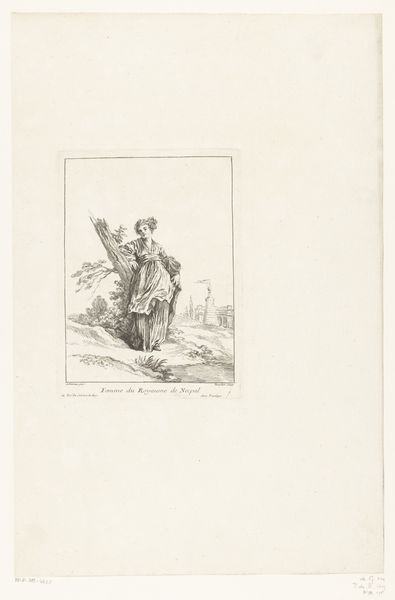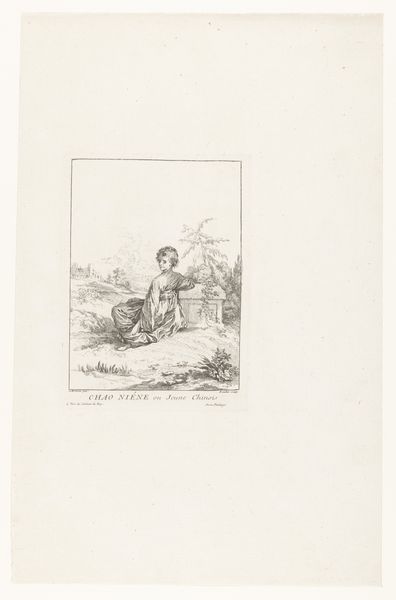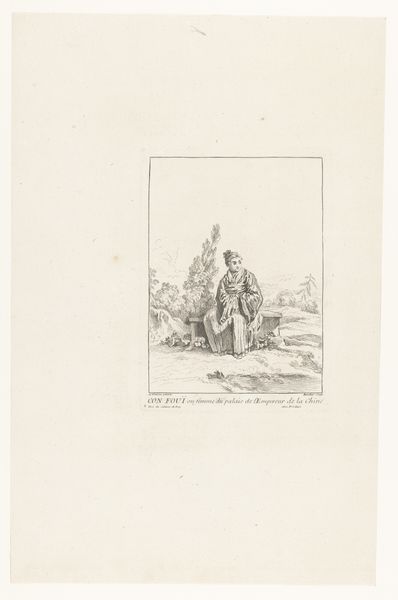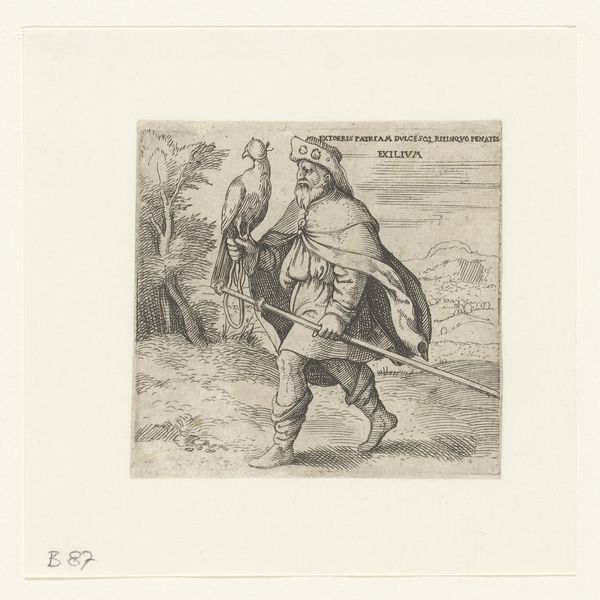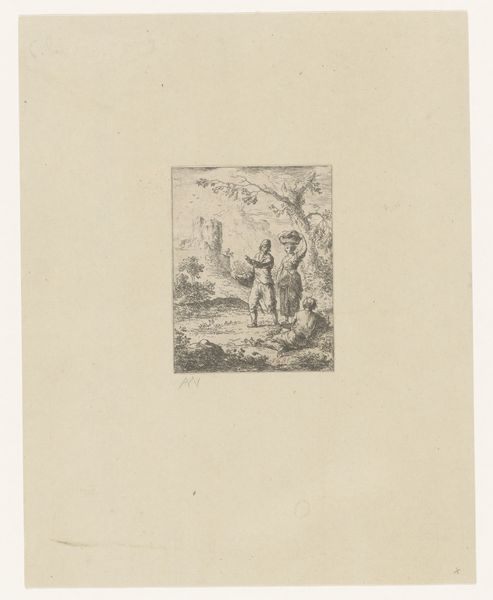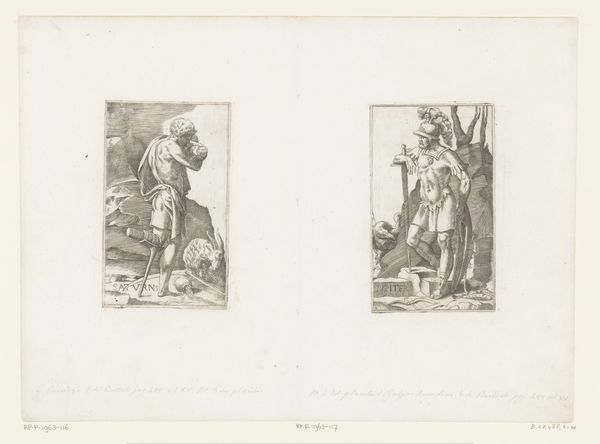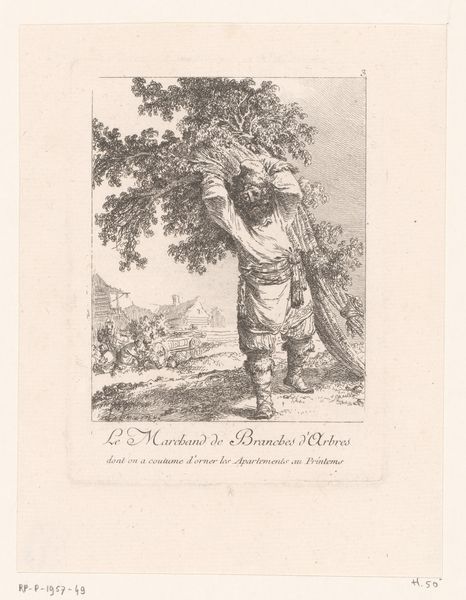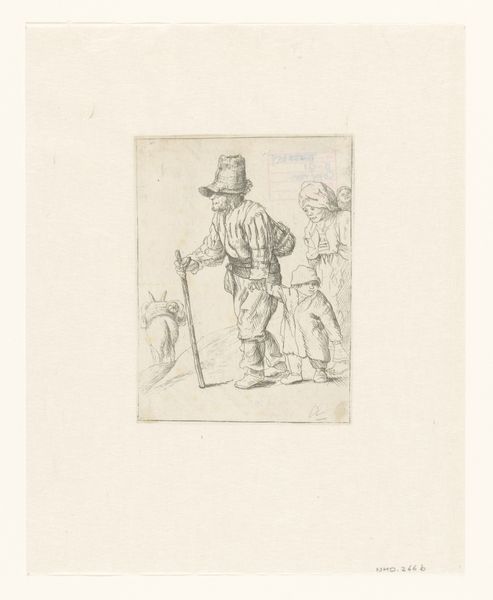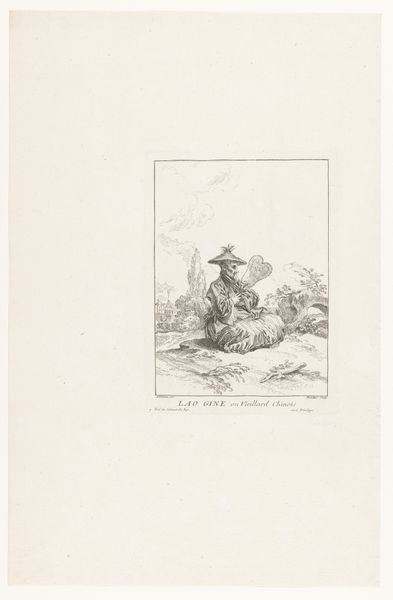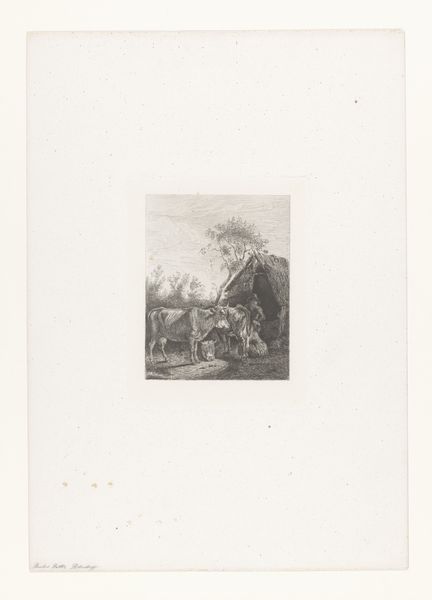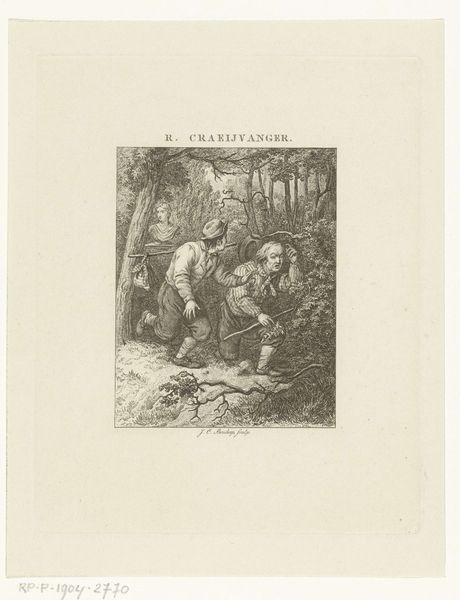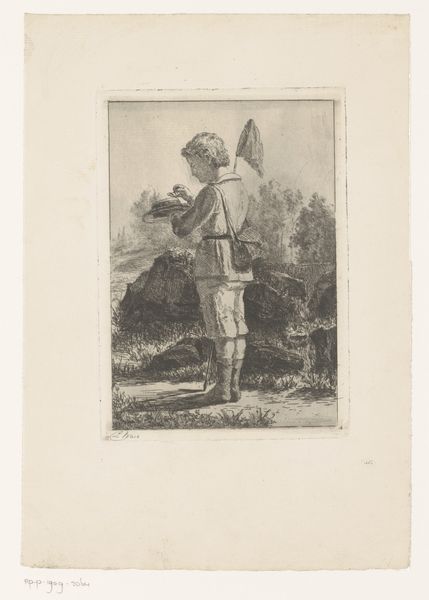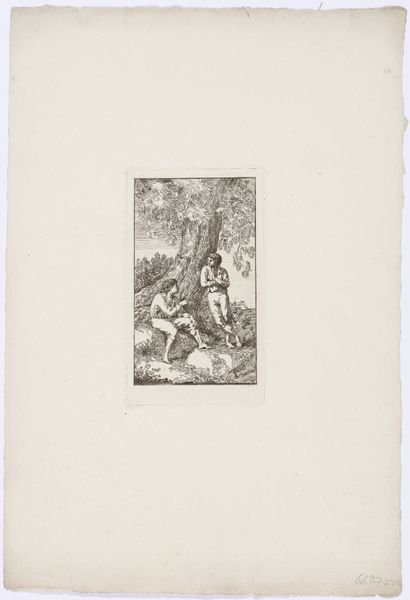
print, paper, engraving
#
portrait
#
ink paper printed
# print
#
pencil sketch
#
old engraving style
#
paper
#
11_renaissance
#
pen-ink sketch
#
history-painting
#
academic-art
#
engraving
Dimensions: height 84 mm, width 78 mm
Copyright: Rijks Museum: Open Domain
Curator: This engraving, simply titled "Huwelijk," which translates to "Marriage," comes to us from the workshop of Enea Vico, dating from sometime between 1533 and 1567. It’s an ink print on paper, currently residing here at the Rijksmuseum. Editor: Oh, look, it's lovely—delicate! It’s as if I stumbled upon a dream half-remembered from a Renaissance play. A lone figure… melancholy, perhaps? Though, those shackles around his ankles do suggest a rather less romantic reality. Curator: Precisely! Let’s delve into that. The technique itself—engraving—is crucial here. Vico, or those within his circle, used painstaking precision to carve these fine lines into a metal plate. This allowed for the reproduction and circulation of the image, effectively democratizing a particular ideal of marriage. Look at how that influences its understanding of love. Editor: Democratizing melancholy? I like that thought! Though, truly, those ankle shackles...it feels like some weird contradiction in terms: marriage presented as a freely entered bond while still seeming somehow enforced or restraining? Almost comical! And do you think he picked his cape to clash so magnificently with his... ankle wear? I see it now, as more than mere melancholy. It’s a sardonic, even witty commentary. Curator: Ah, but let’s consider the material constraints of the period. Paper was becoming more readily available, enabling this spread of visual culture, impacting how these unions were perceived, presented and thus participated in... Editor: Yes, of course! Mass producing little reminders of impending nuptial doom! But then, looking again at his face, there is the slightest smile playing about the lips. This artwork keeps pulling me in separate ways—like those conflicting vows we hear, 'to have and to hold’ and then you glimpse him, slyly calculating if the "hold" might someday include freedom regained. Maybe it’s not so somber after all. Curator: Indeed. Reflecting upon the engraving as a historical artifact reveals intricate networks of production, dissemination, and the complex negotiations surrounding gender roles of its time, providing an accessible and compelling visualization to a rather fraught sacrament. Editor: It leaves me pondering just how little some things truly change. I suppose the best marriages, like this fascinating print, have a dark little joke at their heart to keep you thinking.
Comments
No comments
Be the first to comment and join the conversation on the ultimate creative platform.

